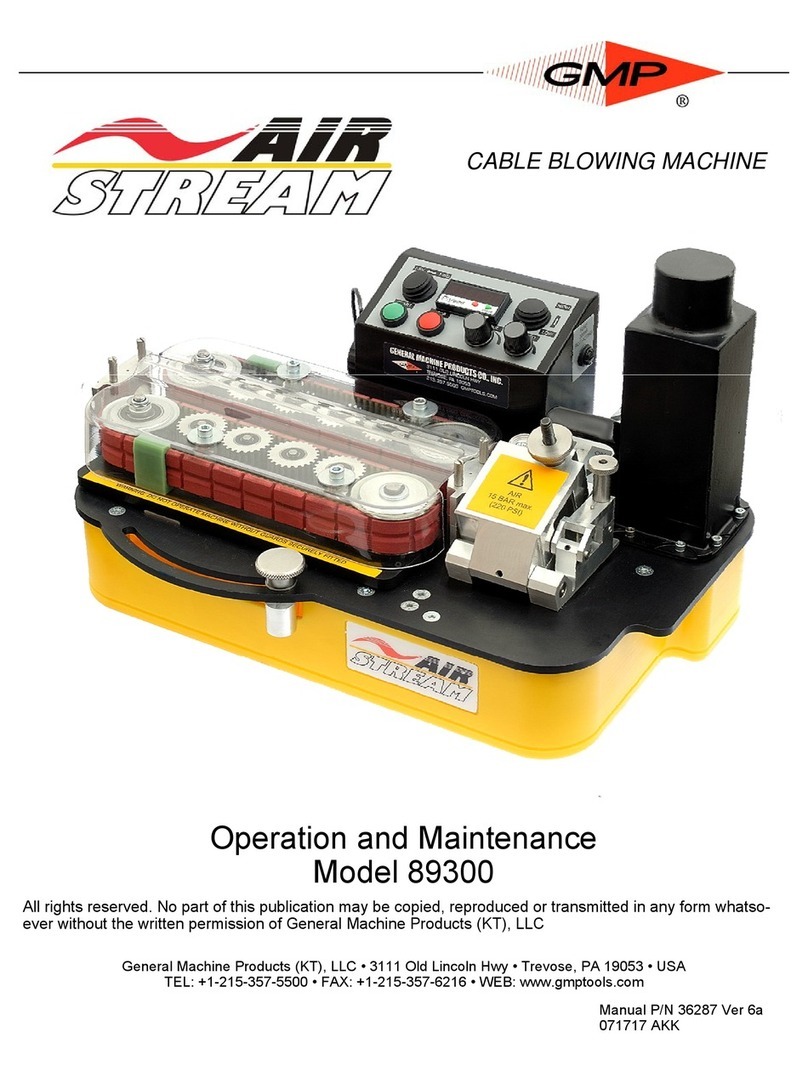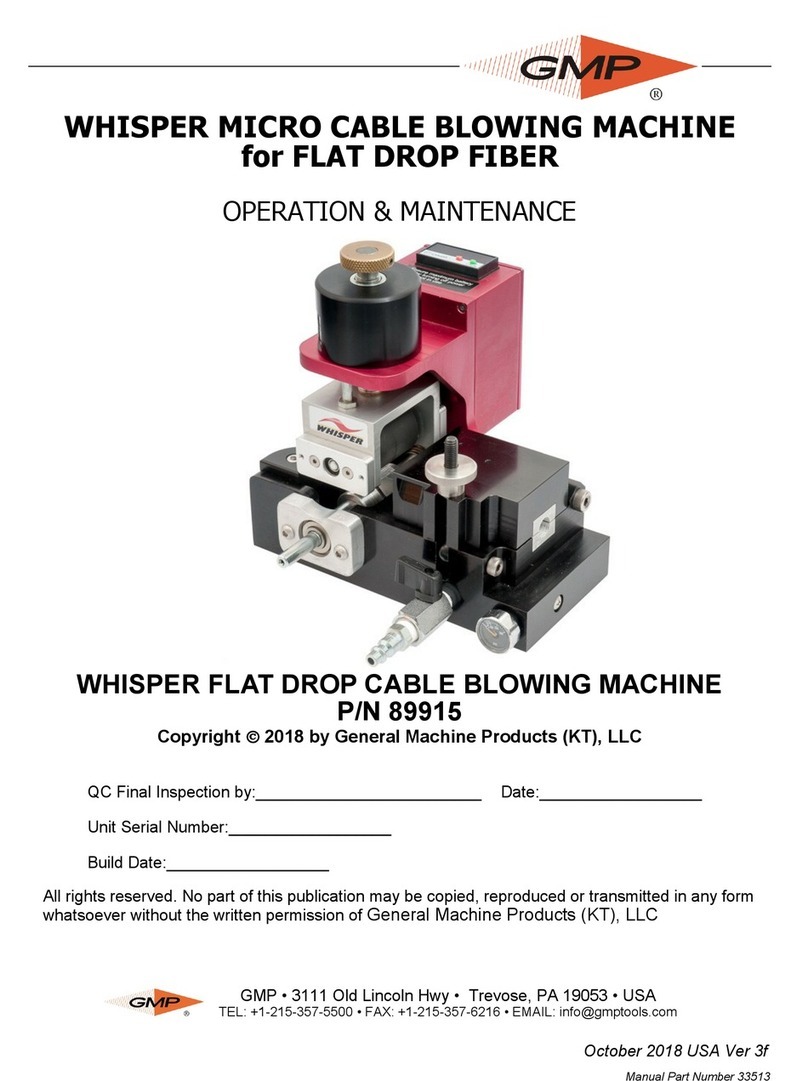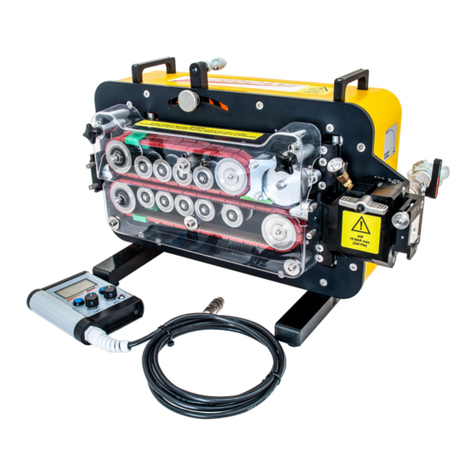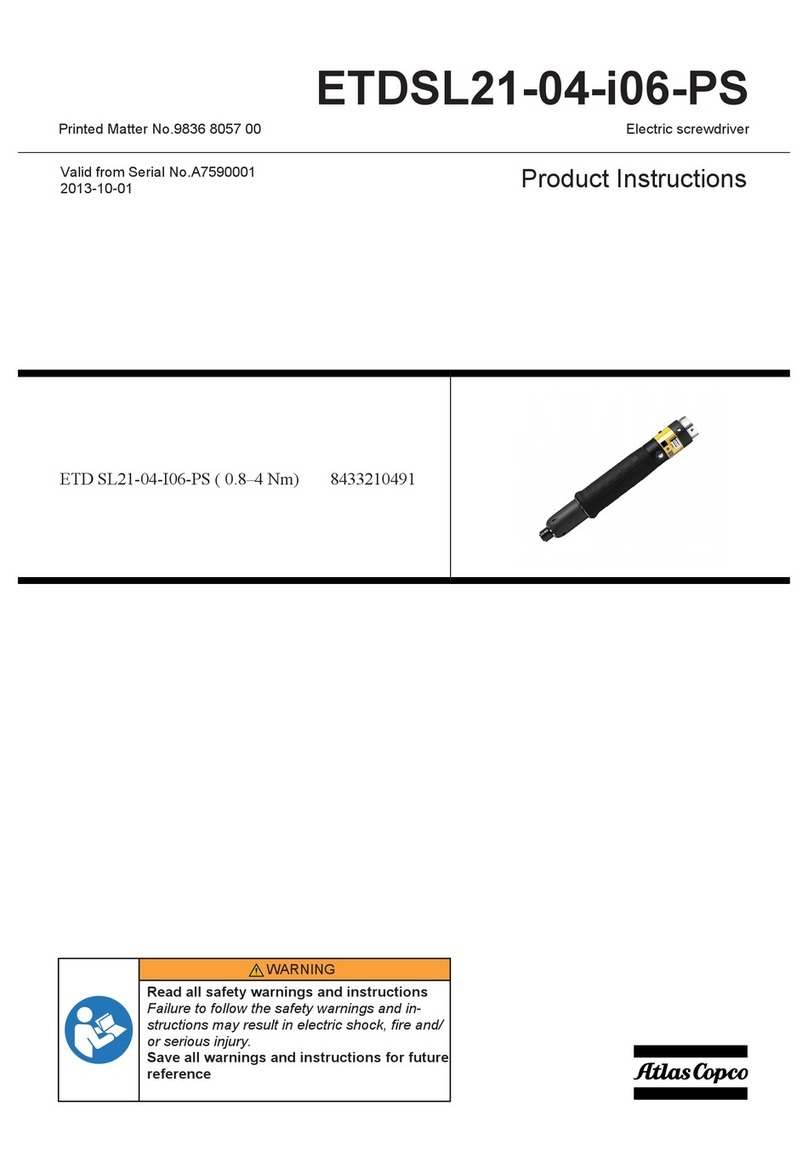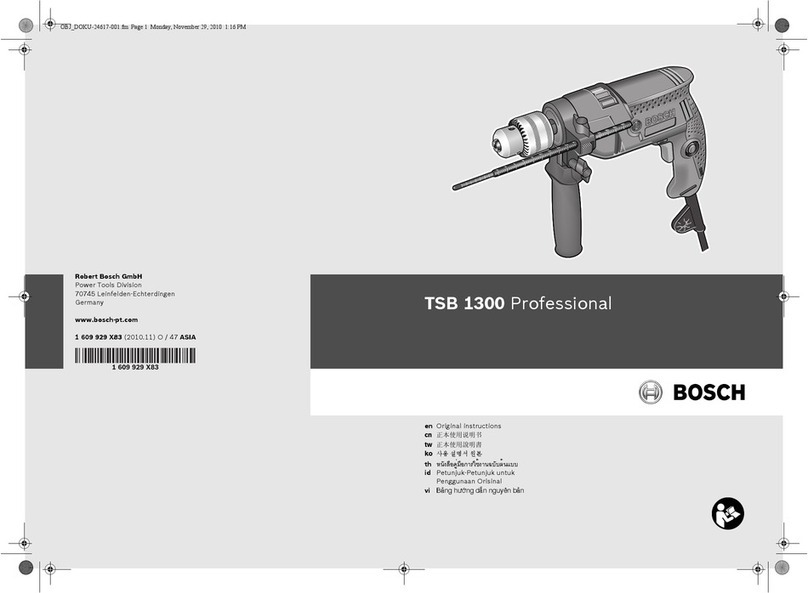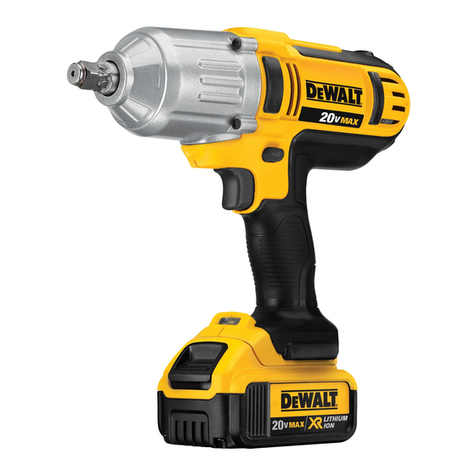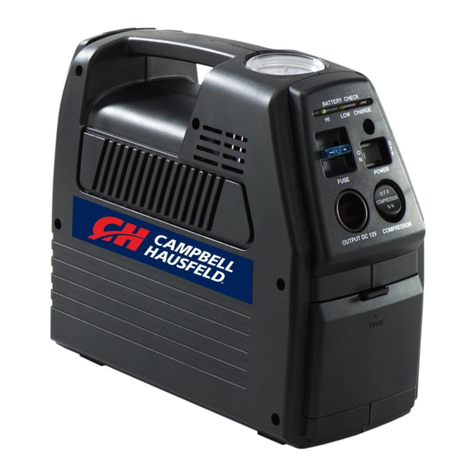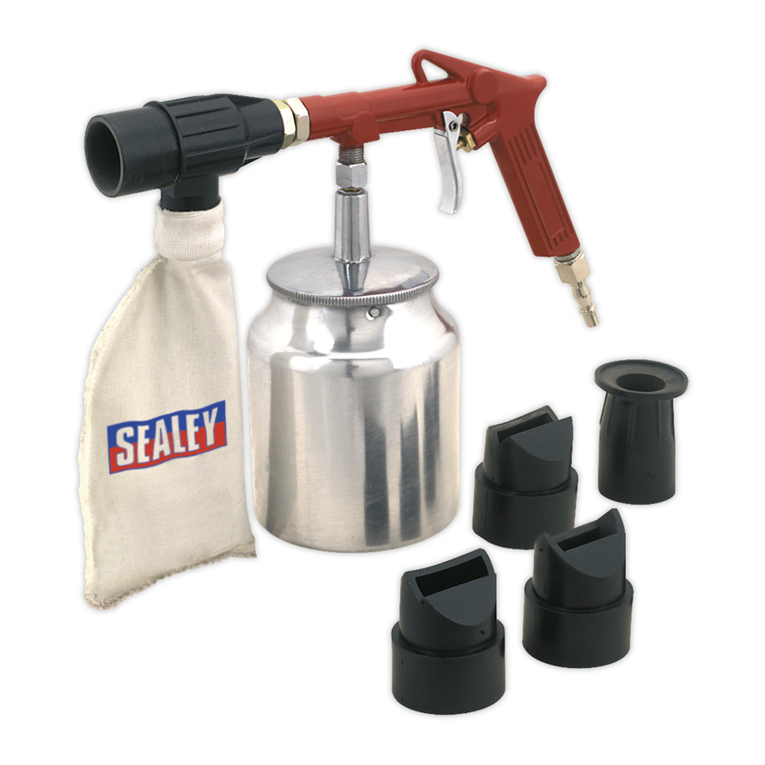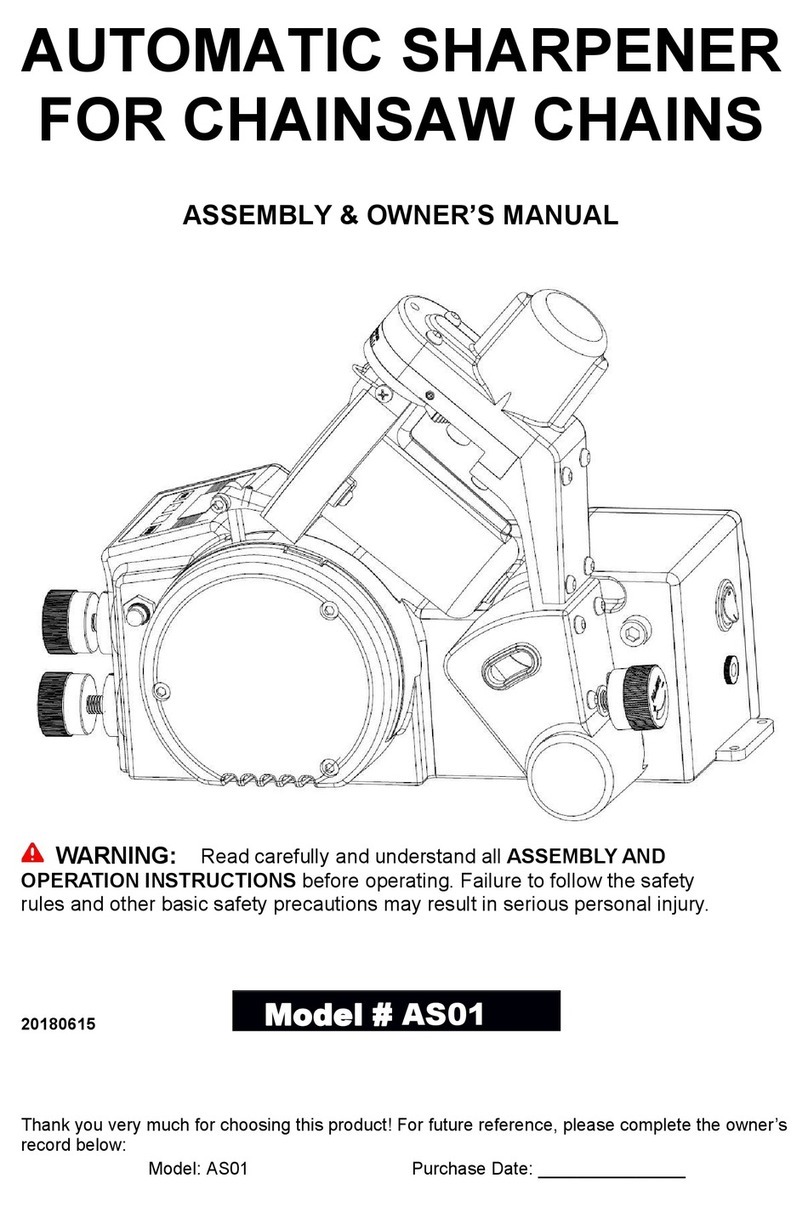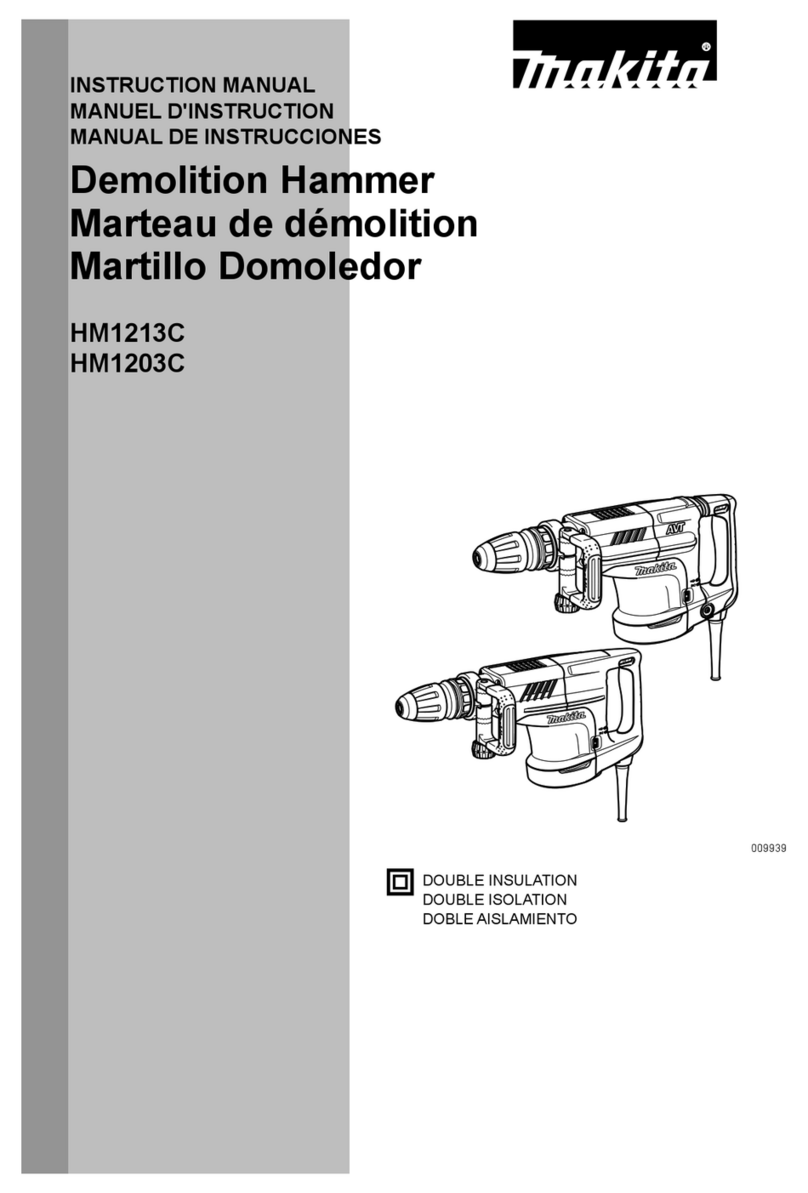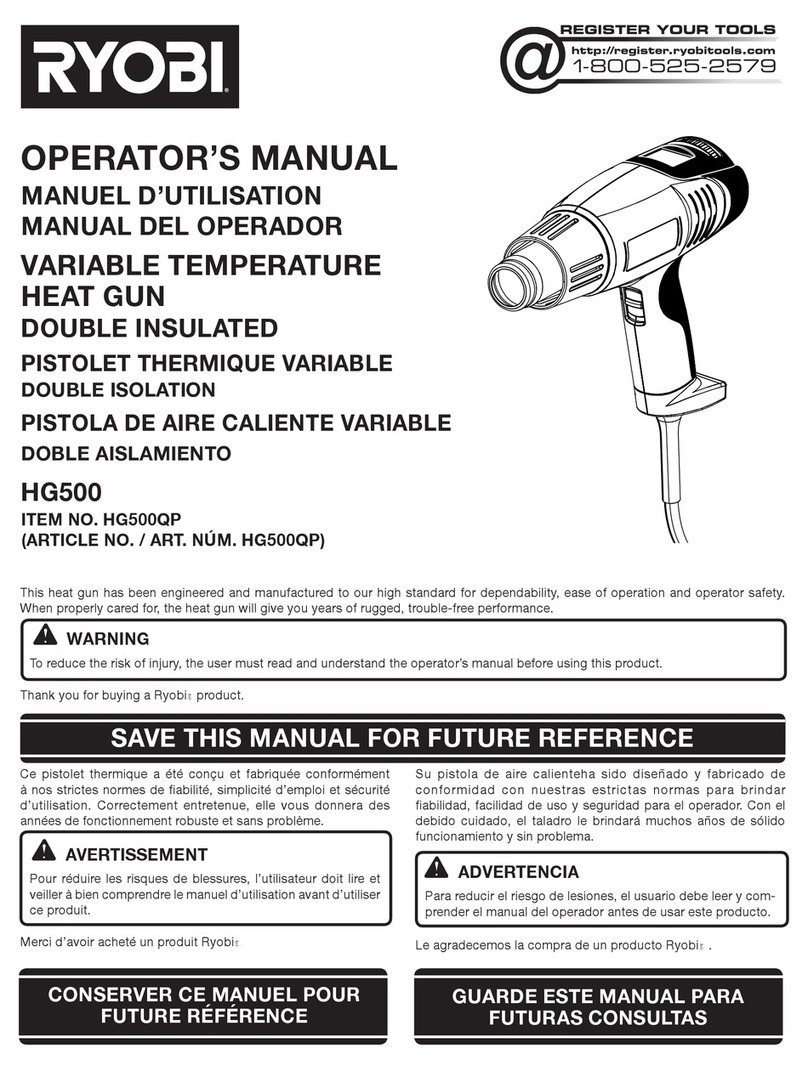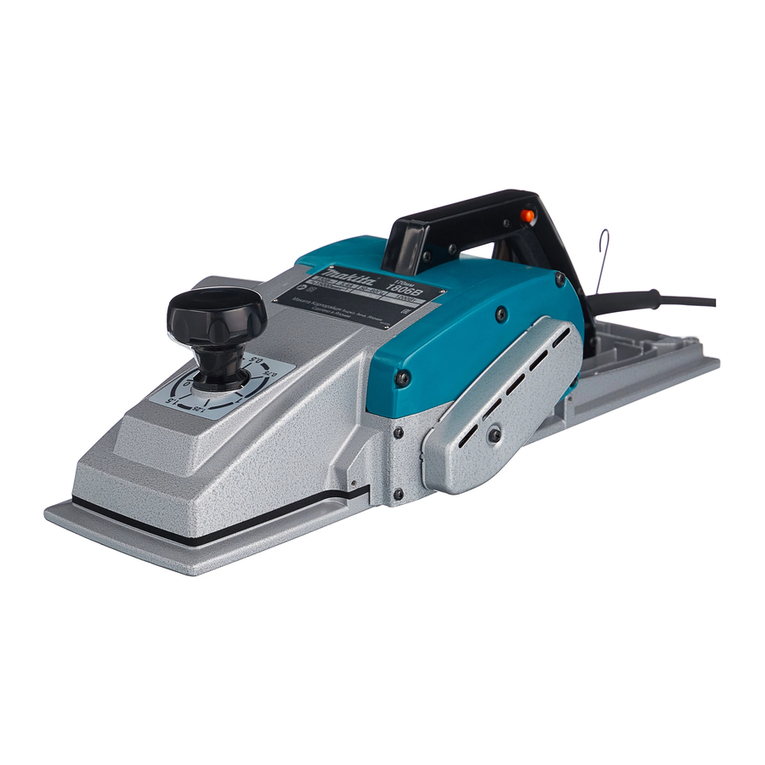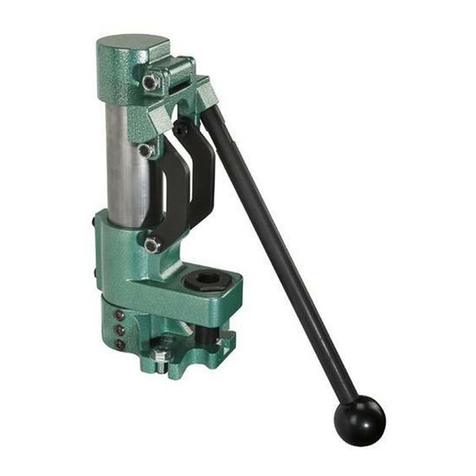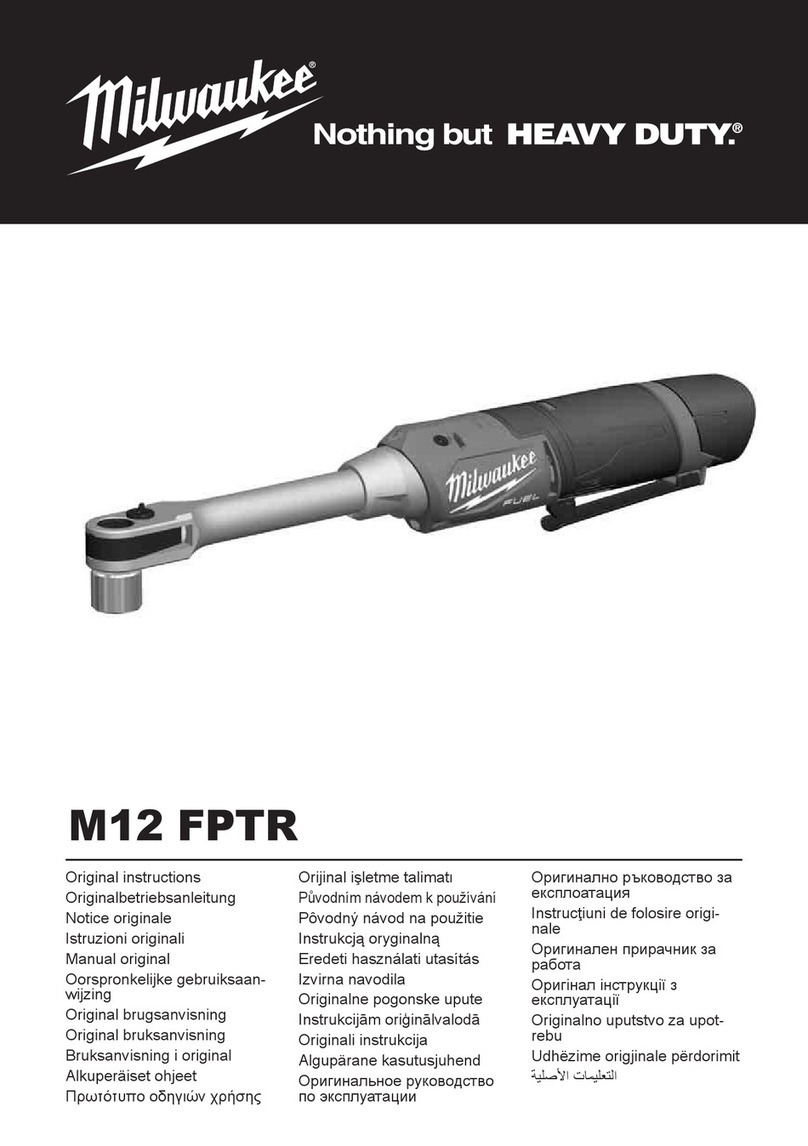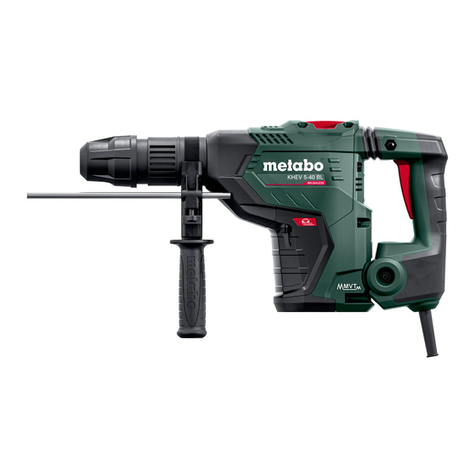GMP Jetstream 89950 Installation guide

Page 1 General Machine Products (KT), LLC
Operation and Maintenance
Model 89950
All rights reserved. No part of this publication may be copied, reproduced or transmitted in any form whatso-
ever without the written permission of General Machine Products (KT), LLC
General Machine Products (KT), LLC • 3111 Old Lincoln Hwy • Trevose, PA 19053 • USA
TEL: +1-215-357-5500 • FAX: +1-215-357-6216 • WEB: www.gmptools.com
CABLE BLOWING MACHINE
Manual P/N 33829 Ver 5b
050319 AKK

Page 2 General Machine Products (KT), LLC
Rev.no Date Details Author
01 Feb 28 2014 Original issue C. Swallow
02 April 21 2014 Reformat for US A. Konschak
03 August 25 2015 Added Relief Valve Settings A. Konschak
04 September 16 2015 Cleaned up content
Added metric cable options A. Konschak
04a October 05 2016 Updated photo to show current air connection
Updated toolkit A. Konschak
04b January 23 2017 Toolkit number correction A. Konschak
04c April 20 2017 Updated specifications on P8 A. Konschak
05 April 25 2017
Relief valve settings updated
Location of pressure switch
adjustment updated
Procedure to set the pressure
relief valve added
A. Konschak
05a July 17 2017 Change company name A. Konschak
05b May 03 2019 Page 33—Configured cable collets and guide
inserts as a single number kit A. Konschak
REVISION HISTORY:

Page 3 General Machine Products (KT), LLC
CONTENTS
1.0 Safety Instructions
2.0 Critical Points
3.0 General Description
4.0 Specification
5.0 Operating procedures
6.0 Maintenance
7.0 Procedure for changing inserts in the duct clamp
8.0 Procedure for changing inserts in the air box
9.0 Procedure for changing inserts in the infeed guides
10.0 Procedure for replacing the air box housing seal
11.0 Procedure for changing the cable drive belts
12.0 Procedure for tensioning the drive belts
13.0 Procedure for checking and replacing the motor drive belt
14.0 Procedure to set the Pressure Switch
15.0 Procedure to set the Pressure Relief Valve
16.0 Monthly Service – check list
17.0 Service History Record
18.0 Duct integrity and Lubrication
19.0 Troubleshooting
20.0 Battery Replacement
21.0 Toolkit
22.0 Spares
APPENDICES
Appendix 1 Cable and duct insert selection chart.
Appendix 2 Counter/Rate meter Programming Instructions

Page 4 General Machine Products (KT), LLC
1.0 SAFETY INSTRUCTIONS
THIS EQUIPMENT SHOULD BE USED ONLY BY PERSONNEL WHO HAVE BEEN GIVEN THE AP-
PROPRIATE TRAINING, AND WHO ARE COMPETENT TO USE IT.
THESE INSTRUCTIONS ARE TO BE MADE AVAILABLE TO OPERATORS OF THIS EQUIPMENT AT
ALL TIMES, FAILURE TO OBSERVE THESE SAFETY INSTRUCTIONS COULD RESULT IN SERIOUS
PERSONAL INJURY AND/OR PROPERTY DAMAGE.
WORK AREA AND GENERAL SAFETY
1. Read and understand the operation and maintenance manual supplied with this equipment. Keep it in
a convenient place for future reference.
2. Keep children and untrained personnel away from this equipment while in operation.
3. Keep all guards and safety devices in place. Do not operate this equipment with guards removed or
damaged.
4. Keep hands, feet and loose clothing away from moving parts, especially at cable entry points.
5. Always stop the machine and isolate compressed air, electrical and hydraulic services to carry out lu-
brication and servicing.
6. Check machine before starting for worn or damaged parts. Check for signs of loose nuts and bolts
etc.
7. If machine is left unattended, ensure that unauthorized use is prevented.
8. Never leave the machine unattended while in use.
9. Consider the use of safety barriers, especially when used in public places; observe all statutory re-
quirements for working environments.
10. Beware of pinch points involved with rotating components,
11. Beware of hot surfaces, machine uses compressed air and hydraulic services.
12. When operating machine always wear appropriate safety clothing, ear defenders, eye protection, hard
hat, safety shoes and leather gloves, machine operates with compressed air at up to 220 psi (15 Bar)
and hydraulic oil at up to 1015 psi (70 Bar).
13. The main machine assembly is in excess of 25 kg (55 lb). When lifting care must be taken, ensure
sufficient man power/lifting gear is available, to prevent personal injury and damage to the machine.
14. Prior to installation ensure the duct route is connected properly.
15. Beware of exposed electrical contacts. Do not touch, or allow metal objects to come into contact.
16. Waste hydraulic oils are to be disposed of via an environmentally acceptable method – e.g. passed on
for re-cycling.
17. Machine may cause additional fire hazard if involved in an existing fire due to compressed air and hy-
draulic oils.
18. No personnel are to be in manholes or ducts when the Cable Blowing Machine is being operated.
19. The machine must be operated on firm ground.
20. Stay clear of cables or lines under tension.
21. Stay clear of pressurised hydraulic lines, air lines and duct.
22. Only use the machine for its intended purpose, do not use the roller drive without the air chamber to
push or to retrieve cable, blow air in the far end to help cable recovery.
23. Do not place cable drum too close to the Cable Blowing Machine.
24. Do not tamper with pressure relief valves or pressure reducing valves.
25.The compressed air supply must not be allowed to enter the air chamber or duct before the belts have
been closed on to the cable. Do not turn the air on until a reasonable length of cable 300' (50m) has
been installed into the duct.
FAILURE TO DO SO MAY RESULT IN PERSONAL INJURY, AS THE CABLE COULD BE EJECT-
ED FROM THE CABLE BLOWING MACHINE WITH HIGH FORCE AND VELOCITY.
26.Ensure the cable drum rotates freely on its stand; the cable should leave from the top of the drum.
27. The cable should enter the machine in a clean and dry condition. In damp, dusty atmospheres, the
cable should be cleaned continuously as it enters the machine.
28. Do not open the air chamber until all the air has been exhausted and the air pressure gauge reads ze-
ro.
29.To prevent damage to the hydraulic hoses and the emergency stop cable never leave them on the
ground when not in use.

Page 5 General Machine Products (KT), LLC
GENERAL HYDRAULIC SAFETY INSTRUCTIONS
The GMP Jetstream Cable Blowing Machine has a high pressure hydraulic drive and control system.
Please observe the following precautions when operating the Jetstream Cable Blowing Machine:-
Always connect the power pack hoses to the Jetstream prior to starting the power pack engine. Failure to
do this may cause severe overheating of the power pack.
Ensure the ‘on/off’ control valve on the Jetstream is in the ‘off’ position prior to starting the hydraulic power
pack to prevent unwanted operation of the machine.
Always ensure the armoured cable to the hydraulic power pack is connected, this provides an essential
emergency cut off facility.
Escaping fluids under pressure can penetrate the skin and cause serious personal injury. Observe the fol-
lowing precautions to avoid hydraulic hazards: -
Ensure all hydraulic connections are securely tightened before operating the machine.
Check for leaks with a piece of cardboard. Do not use your hands!
Do not exceed working pressure of hydraulic hoses.
Visually inspect hoses regularly and replace if damaged.
GENERAL PNEUMATIC SAFETY INSTRUCTIONS
The GMP Jetstream Cable Blowing Machine is a pneumatic device, using pressurised air to project cable
at high velocities. Please observe the following precautions when operating the Cable Blowing Machine:-
Compressed air can cause flying debris. This could cause personal injury. Always wear personal protec-
tive equipment.
Ensure no personnel are in the manhole at the far end of the cable run. Severe personal injury may result.
Never open the air chamber when pressurised.
Only AUTHORIZED, fully trained personnel should operate the air compressor.
GENERAL ELECTRICAL SAFETY INSTRUCTIONS
The machine has electrical monitoring and safety circuits. Observe the following precautions to avoid elec-
trical hazards:
Do not operate in water. Do not expose the machine to rain.
Always ensure the armoured cable to the hydraulic power pack is connected, this provides an essential
emergency cut off facility.

Page 6 General Machine Products (KT), LLC
2.0 CRITICAL POINTS THAT DRAMATICALLY AFFECT THE
OPERATION OF THE CABLE BLOWING MACHINE
• PRESSURE ON THE CABLE (POSITION OF THE ADJUSTMENT WHEEL) SHOULD BE SET AS
PER THE INSTRUCTIONS
• BELTS TO BE CLOSED AT ALL TIMES WHEN CABLE IS INSTALLED INTO MACHINE.
• CORD SEALS IN AIR CHAMBER IN GOOD CONDITION AND CORRECTLY FITTED TO PROVIDE
GOOD SEALING.
• CORRECT CABLE SEAL FITTED.
• DUCT/INNER-DUCT FULLY CONNECTED AND PRESSURE TESTED.
• DUCT AND CONNECTING FITTINGS ARE SUITABLE FOR OPERATING AT 220 psi (15 BAR) AIR
PRESSURE.
• DUCT CLAMP SECURELY TIGHTENED.
• COMPRESSOR CAPACITY SUITABLE FOR DIAMETER OF INNER-DUCT BEING USED (SEE
SECTION 4) @ UP TO 220 psi (15 BAR) (HIGHER PRESSURE GIVES BETTER PERFORMANCE).
• CABLE DRUM MUST BE LOCATED DIRECTLY BEHIND AND IN LINE WITH THE BLOWING
MACHINE.
• AIR CHAMBER, DRIVE BELTS AND PULLEYS, CABLE GUIDES, MUST BE CLEAN AND FREE
FROM DEBRIS, SLUDGE, DIRT, WATER AND LUBRICANT.
• THE CABLE MUST BE HAND GUIDED INTO THE BLOWING MACHINE THROUGH A DRY CLEAN
CLOTH BY THE OPERATOR WEARING WORK GLOVES.
• ENSURE THE COMPRESSED AIR SUPPLY IS NOT APPLIED TO THE CABLE UNTIL
APPROXIMATELY 300' (100 METERS) OF CABLE HAVE BEEN INSTALLED OR THE
HYDRAULIC PRESSURE BEGINS TO RISE.
• THE HYDRAULIC PRESSURE SHOULD BE BETWEEN 290-435 PSI (20-30 BAR) AT THE
START OF A BLOWING INSTALLATION. IF GREATER DO NOT PROCEED. CHECK
CABLE ADJUSTMENT WHEEL SETTING, INNER-DUCT, CABLE, CABLE SEALS, CABLE
COLLET SIZES. RECTIFY BEFORE RE-COMMENCING THE INSTALLATION.
• ALWAYS FIT THE HYDRAULIC HOSE DUST CAPS WHEN THE HOSE IS NOT IN USE,
CLEAN AND CHECK THE QUICK RELEASE COUPLINGS BEFORE USE.
DISCLAIMER
General Machine Products takes care in the design of its products to help ensure that the cable is
protected during installation. Due to the variety and different methods of cable manufacture the
responsibility of checking the cable compatibility with the equipment lies with the operator.
Therefore, GMP cannot accept liability for any damage to the cable.

Page 7 General Machine Products (KT), LLC
3.0 GENERAL DESCRIPTION
The GMP Jetstream machine is designed to provide an effective and safe method of fiber optic cable
installation. The system installs fiber optic cable of 4-20mm outside diameter at up to 280 ft/min (85m/min)
into pre-installed inner-ducts, employing the viscous drag compressed air principle.
The machine feeds compressed air into the inner-duct via the air box and uses a hydraulic motor and
reduction gearing to drive a pair of compliant belts (both belts are driven). This system is protected by a
pre-set pressure relief valve and pre-set pressure sensor. The electronic monitoring system provides read
out of speed and distance and automatic protection against duct obstruction.
The belts are covered with a compliant coating to help prevent damage to the cable. The belts offer a large
surface area in contact with the cable ensuring high grip with reduced compressive loading.
During installation, the torque applied to the cable by the belts adjusts automatically up to a pre-set
maximum value (after which the machine will shut down) to help prevent damage to the cable. A full range
of accessories is available to allow the machine to handle a wide range of cables and ducts.
The machine may be placed on the ground or on a support to bring the cable to a suitable height. A
separate reinforced transit case is provided; this will help protect the machine from damage during transit
and can be used as a support for the machine when being used to install cable.
The unit is CE approved.

Page 8 General Machine Products (KT), LLC
Weight 68 lbs. approx. 31kg approx.
Weight including case 132 lbs. approx. 60kg approx.
Dimensions (height x
length x width) 9 1/4"x 24 1/2" x 19"233mm x 620mm x 484mm
DIMENSION AND WEIGHTS
Minimum air hose bore: 1 ¼"32mm
Maximum air pressure: 210 psi 15 Bar
For Ducts with an Inner Diameter of: Minimum Flow Acceptable
up to 25mm 150CFM 4m³/min
26 up to 30mm 185CFM 5m³/min
31 up to 35mm 250CFM 7m³/min
36 up to 40mm 375CFM 10m³/min
41 up to 44mm 450CFM 12m³/min
PNEUMATIC SYSTEM
Maximum operating pressure: 1015 psi 70 Bar
Recommended flow: 4 gal/min (US) 15 l/min
Pressure
switch setting:
12-20mm OD Cable 1015 psi 70 Bar
4 -12mm OD Cable 725 psi 50 Bar
12-20mm OD Cable 1160 psi 80 Bar
Relief Valve
setting 4-12mm OD Cable 870 psi 60 Bar
Initial starting pressure:
(if greater the set-up needs checking) 290-435 psi 20-30 Bar
HYDRAULIC DRIVE SYSTEM
4.0 SPECIFICATION
Power requirement: 18 Vdc (2 x 9v cells)
Fuse rating: 315 mA
ELECTRONIC MONITORING SYSTEM
Cable size: 0.158" to 0.787"ø4 to ø20mm
Duct size: (OD Controlled) 3/4 - 1 1/2" SDR
Duct size: (OD Metric) ø10 to ø50mm
Cable speed: 0-280 ft/min 0-85m/min.
Maximum pushing force: 132 lbs. 60kg
Ambient Temperature Range 32-104 °F0-40 °C
OPERATING CAPACITIES

Page 9 General Machine Products (KT), LLC
Jetstream machine
Duct route
Cable drum
5.0 OPERATING PROCEDURE
IT IS IMPERATIVE THAT ALL PERSONS USING, OPERATING OR MAINTAINING THIS
CABLE BLOWING MACHINE:
• HAVE RECEIVED COMPREHENSIVE TRAINING IN THE USE OF THIS MACHINE.
• ARE COMPETENT TO USE IT,
• AUTHORIZED TO USE IT AND
• HAVE READ AND UNDERSTOOD THIS MANUAL
GENERAL MACHINE PRODUCTS CANNOT BE HELD RESPONSIBLE FOR MISUSE OF THIS
EQUIPMENT.
Set up for installing cable with the machine mounted above ground:
Position the machine in line with the route of the duct.
Position the cable drum behind the machine and in line with the machine. See sketch below (this shows a
plan view of the recommended set up).
Ensure the machine is secure (either on its own stand or a separate suitable stand).
Ensure the machine is fitted with the appropriate guides and collets to suit the cable being installed and
ducts into which the cable is to be installed. (See Appendix 1 for details of interchangeable parts and
sections 7, 8 & 9 for procedures on how to fit these parts).
To set the machine up to install cable it will be necessary to:
1. Select and set the appropriate pressure switch setting for the cable being installed.
2. Fit the duct into which the cable is to be installed into the air box and duct clamp.
3. Fit the cable through the machine.
4. Connect the air supply to the machine1.
5. Connect the hydraulic power input to the machine.
1 use the supplied 4
claw to round adapter
if needed

Page 10 General Machine Products (KT), LLC
Pressure Switch Setting
Caution
Refer to the section 4 ‘SPECIFICATION’ for the correct pressure settings for the pressure switch and to
section 14 ‘PROCEDURE TO SET THE PRESSURE SWITCH’ for the setting procedures.
NOTE: - The cable blowing machine is supplied as standard with the pressure switch set at 1015
psi (70 Bar), these settings are suitable for cables in the range 12-20mm O.D.
For cables 4 - 12mm O.D. these settings need to be changed, refer to the section 4
‘SPECIFICATION’ for the correct pressure settings for the pressure switch and to section 14
‘PROCEDURE TO SET THE PRESSURE SWITCH’ for the pressure setting procedures.
Fit the duct into which the cable is to be installed into the air box and duct
clamp.
It is recommended that a length of duct similar in size to the duct into which the cable is to be installed be
fitted in the duct clamp. This length of duct may then be connected to the installed duct (the length of duct
underground into which the cable is to be installed) using a suitable connector.
For duct sizes Ø12-22mm slide a suitable size O ring over the end of the duct.
Fit the duct into the end of the air box housing so that it protrudes half way into the housing.
For duct sizes Ø12-22mm position the O ring so that it sits against the seal face, as shown in below photo.
For duct sizes over Ø22mm, the seal is permanently located within the seal collet.
Once the duct has been positioned, the duct clamp may be closed and the locking screw tightened; the
duct is now secure.
ENSURE THAT THE INNER-DUCT IS FULLY PREPARED FOR USE, I.E.
a. FULLY CONNECTED
b. PRESSURE TESTED
c. CABLE EXIT RETAINING DEVICE FITTED
d. LUBRICATED
FOR FURTHER DETAILS ON INNER-DUCT LUBRICATION REFER TO SECTION 14.
For duct sizes over Ø22mmFor duct sizes Ø12 - 22mm

Page 11 General Machine Products (KT), LLC
Fit the cable through the machine.
It is possible to insert the cable in the machine in two different ways.
Method 1:
This method is only suitable if the machine has been previously set up with the correct cable guide and ca-
ble collets to suit the cable being installed, see sections 8 & 9 for the procedure for changing the guides.
Connect the two hydraulic hoses and the emergency stop cable to the power pack or hydraulic power
source. Ensure the plug to socket & socket to plug connections are correctly made.
Turn the speed control knob
all the way to minimum.
Turn the adjustment wheel fully
counter-clockwise to fully open
the drive belts
Select the appropriate split cable
seal (see appendix 1) and position
it in the groove in the cable collet.
Turn to hydraulic control valve
to the ‘ON’ position.
Slowly turn the speed control
knob clockwise until the belts
are just moving.
Replace top half of the cable
collet
Take the cable to be installed
and pass it through the cable
guide insert so that the end is
between the belts.
Close the belts (using the ad-
justment wheel) gently until the
cable is gripped (there is no
need to apply the full installa-
tion pressure to the cable at
this stage)
The cable should now feed slowly
through the belts, cable seal, air
box and into the duct.
Turn to hydraulic control valve to the ‘OFF’ position. Close and tighten the thumb nuts securing the airbox.

Page 12 General Machine Products (KT), LLC
Method 2:
Open the belts fully using the ad-
justment wheel and lift the magneti-
cally held guard flap.
Remove the top half of the cable
guide insert. Ensure the correct
cable guide inserts are fitted for
the cable (see appendix 1 and
section 9).
Open the airbox and remove the
top half of the cable seal collet.
Ensure the correct collets are
fitted (see appendix 1 and sec-
tion 8).
Select the appropriate split cable
seal (see appendix 1) and posi-
tion it around the cable.
Take the cable and simultane-
ously place it into the duct and
into the air box. Thread it be-
tween the belts. Ensure the ca-
ble seal seats in the appropriate
groove in the cable seal collet.
Replace the top halves of the
belt infeed guide and cable
seal collet. Close the airbox
and tighten the thumbnuts.

Page 13 General Machine Products (KT), LLC
Setting the clamp force:
Close the drive roller assembly onto the cable as follows:
Loosen the locking handle by moving it in a counter-clockwise
direction. The handle can be indexed to assist in this movement.
The adjustment wheel can now be rotated to open or close the
belts. Turn the wheel clockwise to close the belts or counter-
clockwise to open them.
When preparing the machine to insert the cable, the belts will be
fully open (adjustment wheel wound fully counter-clockwise). Once the cable
has been positioned in the machine the belts must be closed on the cable in order to drive the cable. The
closed belts will also stop the cable being dragged back out of the machine by any tension in the cable.
Turn the adjustment wheel clockwise until the belts close onto the cable. The amount of pressure applied
to the cable can be adjusted by turning the adjustment wheel either clockwise or counter-clockwise. Once
the desired pressure has been obtained the locking handle should be tightened by turning it in a clockwise
motion. The handle can be indexed to assist in this movement.
As more experience is gained using the machine, the amount of compression required will become clear.
Adjustment Wheel
Locking Handle

Page 14 General Machine Products (KT), LLC
Set up for installing cable with the machine mounted below ground:
The set up is similar to the set up for installing cable above ground. Typically this type of installation is
used for “series blowing” i.e. when a length of cable is already installed, and the limit of installation
distance is reached. In such cases it is customary to couple a “series machine” located down a manhole
some distance from the point of main installation. This machine operates in conjunction with the machine
located at the main point of installation. The GMP Jetstream machine is capable of this type of operation,
it may be coupled with a second machine to increase the distance a single cable can be installed without
splices. The only difference between this set up, and the set up for installing cable with the machine
above ground, is that there will be no drum stand carrying the cable drum. The cable will be exiting from
one side of the manhole and blown into the duct at the other side of the manhole. The machine should be
aligned with both the incoming cable and the outgoing duct path, both side to side and up and down.
NOTE: THE MACHINE MUST NOT BE SUBMERGED IN WATER.
If the hole is full of water it must be pumped out before placing the machine on the bottom of the hole.
Connect the hydraulic supply to the machine.
Note: - Please refer to Section 4.0 Specification for details on recommended flow and pressure
requirements.
Ensure that both the hydraulic control lever is in the ‘OFF’ position and that the speed control knob is in the
fully minimum position (fully rotated counter-clockwise). The emergency stop also needs to be set in the
upper position, twist counter-clockwise to ensure this is the case.
Connect the two hydraulic hoses and the emergency stop cable to the power pack (or hydraulic power
source). Ensure the plug to socket & socket to plug connections are correctly made.
NOTE:
NEVER RUN THE JETSTREAM WITHOUT THE EMERGENCY STOP CABLE BEING CONNECTED.
ONLY AUTHORIZED, FULLY TRAINED OPERATORS SHOULD BE ALLOWED TO OPERATE THE
HYDRAULIC POWER PACK (OR HYDRAULIC POWER SOURCE).
The machine is now ready to start the cable installation.

Page 15 General Machine Products (KT), LLC
Installing cable.
The machine is fitted with a range of controls to help the operator to install cable in the minimum time with
the least risk of causing damage to the cable or duct.
These controls are identified and their function is described below.
Speed control knob:
This valve controls the motor speed, turn
this clockwise to increase the speed of
the belts (and the cable). Turn counter
counter-clockwise to reduce the speed.
This knob can also be used to maintain
correct hydraulic pressure (driving force).
Should the pressure start to rise towards
the cut-off level the operator can reduce
the speed of the machine, this will also
reduce the hydraulic pressure.
On/Off hydraulic control lever:
This lever controls the flow of the hydraulic oil. Moving the lever to the ‘OFF’ position bypasses the oil and
stops the motor; moving the lever to the ‘ON’ position allows flow to the motor.
Emergency stop:
In the event that an emergency situation occurs and
the machine needs to be stopped and prevented
from restarting, this button will ground the spark plug
on the engine powering the hydraulic power pack.
The power pack can only be restarted once the
emergency stop has been reset, by twisting the but-
ton counter-clockwise.
Speed/Distance indicator:
This device will measure and display the distance
travelled by the cable and also the speed at which
the cable is travelling. To toggle between speed and
distance press the right-hand ‘Green’ button twice.
Pressing the right hand ‘Green’ button once shows
what is being displayed, either speed or distance.
Tacho represents speed, Count represents distance. While displaying the distance only it is possible to
reset by pressing the left hand ‘Red’ button.
Should it be necessary to replace the speed distance measuring device please contact General Machine
Products.

Page 16 General Machine Products (KT), LLC
To install cable:
With the Jetstream setup as previously described, first ensure that the hydraulic power pack is running.
Press the ‘on/off’ button for the counter system; the screen should now power up. As described above
adjust the display to show the desired output.
Turn the hydraulic control lever to the ‘ON’ position. Turn the speed control knob clockwise towards ‘max’
until the belts begin to move. The cable will now feed through the machine and into the duct; the speed of
the install can be adjusted as required using the speed control knob.
Once a reasonable distance of cable has been installed, typically 300-600 feet (100-200m) or the hydraulic
pressure begins to increase, turn on the air feed via the handle on the ball valve. This will assist the
machine to feed the cable; verify via the pressure gauge that a reasonable pressure is being held within
the air box.
The duct route, through which the cable is to be fed, should be configured in such a way that the cable can
feed all the way along the duct and out the other end.
If there is an unexpected obstruction in the duct route the belts will see this as an increase in torque
demand and increase the drive system pressure. Assuming the pressure switch has been set at an
appropriate level, the hydraulic power pack will cut out and the belts will stop turning before they push the
cable so hard as to cause it to buckle. If (due to lack of previous knowledge of the cable characteristics)
the pressure switch has been set at a figure which is too small to push the cable the setting may be
increased. Bear in mind that this will increase the risk of the cable being damaged by buckling.
It will be necessary to be able to determine when the cable has emerged at the other end of the duct route.
A typical way of achieving this aim is to have a colleague positioned at the end of the duct run; in contact
with the main installer using a radio transmitter/receiver of some description. In this way the main installer
may be advised when the cable has completed the run, the operator can then stop the machine by turning
the hydraulic control lever to the ‘OFF’ position.
The speed control knob should then be rotated fully counter-clockwise into the minimum position.
Finally, turn the handle on the ball valve for the air feed into the ‘closed’ position. Please allow several
minutes for the air pressure in the duct to dissipate. Do not open the air box until the air pressure
gauge reads zero.

Page 17 General Machine Products (KT), LLC
6.0 Maintenance
The JetStream Cable Blowing Machine has been designed to give reliable, trouble free service over long
periods. The machine requires no sophisticated maintenance procedures, simple common sense checks
and precautions are all that are needed.
The main source of breakdown and/or malfunction of a machine being used outdoors is contamination by
the elements, this contamination may be introduced into the machine in a number of different ways.
There may be mud, dust or other contaminants carried into the machine on the cable or duct (there may be
surface coatings of lubricants or other release type agents on the outer surfaces of the cable and duct, this
could build up on the belts and make them slip).
Contamination can also come from a muddy surface, or be splashed by vehicles when it is being used by
the roadside.
Please Note: Due to their intended use, cord seals, cable seals, duct clamps, drive belts and cable drive
belts are considered consumable items and are therefore not covered by the limited warranty.
It is convenient to consider each function of the machine in turn.
As a general rule, every time an interchangeable part is removed and replaced by a part of a different
size, shape etc. the part being removed should be thoroughly cleaned before being returned to its box.
Similarly the cavity from which it was removed can also be cleaned prior to the assembly of the
replacement part.
Air box parts: keep clean, build up of moisture and
dust will prevent the faces from mating, prevent the
housing seal from sealing etc. Use any traditional
workshop cleaning agent.
Cable infeed guide: keep
clean, build up of moisture
and dust may put drag on
the cable. Use any traditional
workshop cleaning agent.
Duct clamps: keep clean,
build up of moisture and dust,
particularly in the grooves,
will reduce the clamping
effect. Use traditional
workshop cleaning agent.

Page 18 General Machine Products (KT), LLC
AIR CHAMBER
The air chamber should be inspected after each operation for seal damage or wear. Seal cord should be re-
placed if damaged and secured in position with the adhesive provided.
The cable seals should be checked for damage or wear and replaced with new ones if required. ALWAYS ap-
ply a smear of silicone grease to the seal bore and lip when installing the seal on to a cable.
ALWAYS clean out any dirt/debris in the air chamber
GENERAL
The machine should be stored in the supplied transit case when not in use. The machine should be
wiped clean after each time used.
ALWAYS ensure that there are sufficient cable seals, cord seal and cord adhesive available in the toolbox
to cover the next installation.
ALWAYS ensure that the service battery and spare battery are have sufficient charge before the cable-
blowing machine is to be used.
SERVICE CONNECTIONS
CHECK the condition of the hydraulic hoses each time used and replace if worn or damaged.
CHECK the condition of the emergency stop cable each time used and replace if worn or damaged.
CHECK the condition of the compressed air hose each time and replace if worn or damaged.
The machine should be returned to GMP (or an approved service agent) after every 1000 hours use (or at
intervals of 12 months) for a major service.

Page 19 General Machine Products (KT), LLC
7.0 Procedure for changing duct clamps
8.0 Procedure for changing cable collets and duct seals in
the air box
Undo the locking screw and
rotate open the duct clamp
housing
Loosen and remove the screw
(1 per insert). Do not lose this
screw; it will be needed for the
replacement clamp.
Remove the duct clamp
Repeat the process for the duct clamp in the other housing half.
To fit the new duct clamp, reverse the disassembly procedure.
For cable collets loosen the screw in the upper
insert. Remove the upper insert from the lower
insert.
Now loosen and remove the screw in the lower
cable seal insert. (Do not lose this screw, it will
be needed for the replacement insert). Re-
move the lower cable collet.
For duct seals loosen and remove the screw.
(Do not lose this screw, it will be needed for the
replacement insert)
Remove the duct seal
Repeat the process for the duct seal in the other
box half
To fit the new inserts, reverse the disas-
sembly procedure.

Page 20 General Machine Products (KT), LLC
9.0 Procedure for changing cable guide inserts in infeed
Loosen and remove the screws securing the up-
per guide housing
Loosen and remove the screw securing the ca-
ble guide insert into the housing
Remove and replace the cable guide insert.
Table of contents
Other GMP Power Tools manuals
